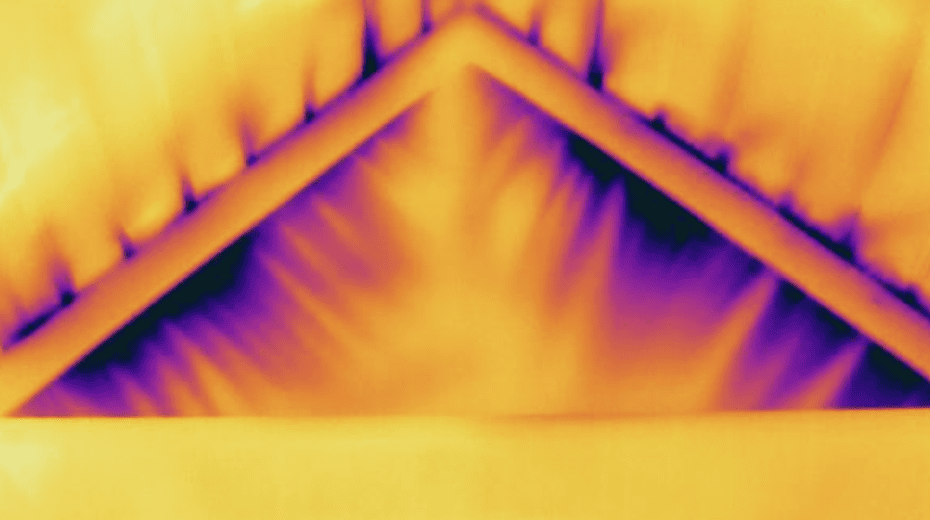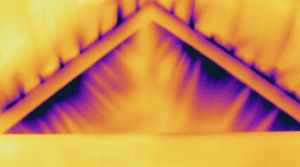Introduction to Thermal Imaging and Its Role in Energy Efficiency
Thermal imaging is a technology that allows us to visualize temperature variations in objects or environments. In the context of energy efficiency, it plays a crucial role by helping identify areas of heat loss or inefficiency in buildings and industrial processes. By capturing thermal images, it becomes possible to pinpoint insulation gaps, electrical problems, or HVAC inefficiencies that might be invisible to the naked eye. This information empowers individuals and businesses to make informed decisions about energy-saving measures, ultimately reducing energy consumption and environmental impact.
Understanding the Basics: How Does Thermal Imaging Work?

Thermal imaging works by detecting the heat energy that objects, people, or areas emit. This technology uses a special camera that can capture different levels of infrared light. This light is invisible to the naked eye, but it can be felt as heat if the intensity is high enough. The camera collects the infrared radiation from a specific scene and creates an electronic image based on information about the temperature differences. This image, often in vibrant colors, helps to easily identify where heat is being lost or where insulation is poor inside a house. Therefore, thermal imaging can significantly help improve your home’s energy efficiency by pinpointing exact areas that need attention.
The Connection between Thermal Imaging and Home Energy Efficiency
Thermal imaging, also known as infrared imaging, is a powerful tool that can significantly improve your home’s energy efficiency. The technology works by detecting heat differences and visually representing these as images. This allows homeowners to easily identify areas where heat is escaping or where cold air is seeping in. By pinpointing these problem areas, you can then take necessary actions such as adding insulation or sealing gaps. Consequently, your home will require less energy for heating or cooling, thus lowering your energy bills and reducing your carbon footprint.
Identifying Energy Leaks in Your Home with Thermal Imaging
Thermal imaging is a powerful tool that can help you improve your home’s energy efficiency by identifying energy leaks. Essentially, it uses infrared technology to detect temperature differences in your home. This can reveal areas where heated or cooled air is escaping, such as poorly insulated walls or gaps around doors and windows. By identifying these energy leaks, you can take corrective measures like adding insulation or sealing gaps, ultimately reducing your energy consumption and saving on your utility bills. So, using thermal imaging for your home is like getting a health check-up for its energy efficiency.
The Role of Thermal Imaging in Insulation Improvement
Thermal imaging plays a crucial role in improving your home’s insulation and overall energy efficiency. By using a thermal imaging camera, you can easily identify areas in your home that lack proper insulation. This technology works by detecting temperature differences and visually representing them as images. When aimed at walls, ceilings, or floors, it can reveal cold spots that indicate heat loss. By pinpointing these areas, you can enhance insulation where it’s needed most, preventing heat escape during winter and keeping your home cooler during summer. Ultimately, this reduces your energy consumption, lowers your bills, and creates a more comfortable living environment.
How Thermal Imaging Can Help Reduce Heating and Cooling Costs
Thermal imaging can significantly reduce your heating and cooling costs by identifying areas in your home where energy is being wasted. This technology uses infrared cameras to spot temperature differences around your home, highlighting areas with poor insulation or air leakage. By pinpointing these energy leaks, you can address them directly, improving your home’s insulation and sealing gaps to prevent air escape. This means your heating and cooling systems won’t have to work as hard to maintain a comfortable temperature, leading to lower energy consumption and, ultimately, lower utility bills.
Case Study: Real-Life Examples of Improved Home Energy Efficiency Using Thermal Imaging
In our case study, we explored how thermal imaging technology significantly enhanced home energy efficiency. For instance, a homeowner in Seattle utilized a thermal imaging camera and discovered several spots in his house where heat was escaping, particularly around windows and doors. After identifying these areas, he proceeded to seal the gaps and install better insulation where needed. As a result, he reduced his energy consumption by a notable 20%, leading to substantial savings on his monthly energy bills. This real-life example clearly illustrates how thermal imaging can be a powerful tool in improving your home’s energy.
The Process of a Home Energy Audit Using Thermal Imaging
A home energy audit using thermal imaging is a straightforward and efficient process. First, a professional auditor uses a thermal imaging camera to scan the entire house. This camera detects temperature differences and transforms them into a visual image, which the auditor analyzes. The thermal images reveal areas where heat is escaping or cold air is entering, such as poorly insulated walls, gaps around doors and windows, or weak spots in the roof. Identifying these areas helps homeowners understand where they need to focus their energy-saving improvements. By addressing these issues, you can significantly improve your home’s energy efficiency, reduce energy bills, and increase overall comfort.
Choosing the Right Professional for Thermal Imaging in Your Home
Selecting the right professional for thermal imaging in your home is crucial. You need to ensure they have the necessary skills, experience, and equipment to carry out the job effectively. Look for a certified thermographer with a solid reputation for quality work. They should be able to accurately identify areas in your home where energy is being wasted, such as poor insulation or air leaks. This will help you make informed decisions on improvements, resulting in a more energy-efficient home. Remember, the right professional will not only provide a thorough thermal imaging service but also offer practical solutions to enhance your home’s energy efficiency.
The Future of Home Energy Efficiency: The Increasing Importance of Thermal Imaging.
Thermal imaging is set to play a crucial role in the future of home energy efficiency. It’s a technology that allows homeowners to see where heat is escaping from their homes, pinpointing areas of energy waste. This could be anything from a poorly insulated roof, gaps in window seals, or even hidden cracks in walls. By identifying these thermal vulnerabilities, homeowners can take precise action to fix them, resulting in a significant reduction in energy consumption and cost. Therefore, the importance of thermal imaging in boosting home energy efficiency is only set to increase in the years to come.

